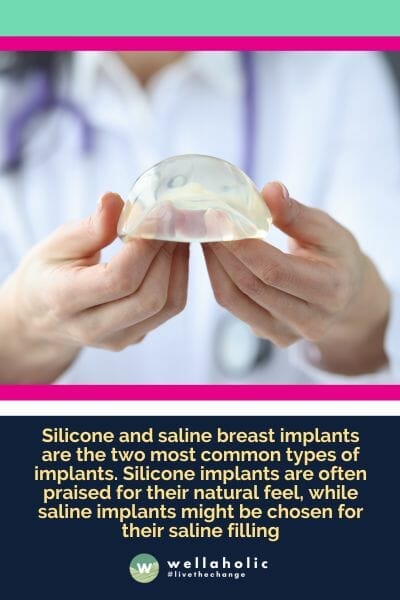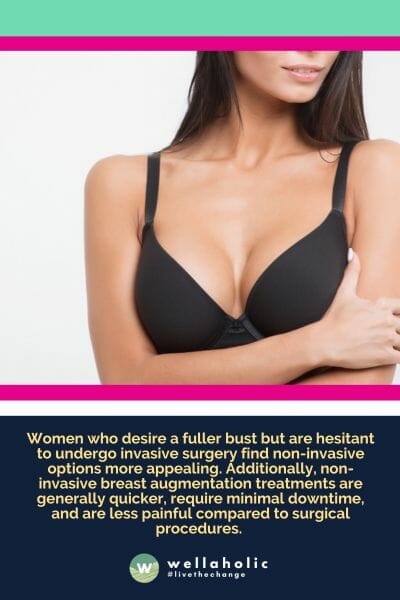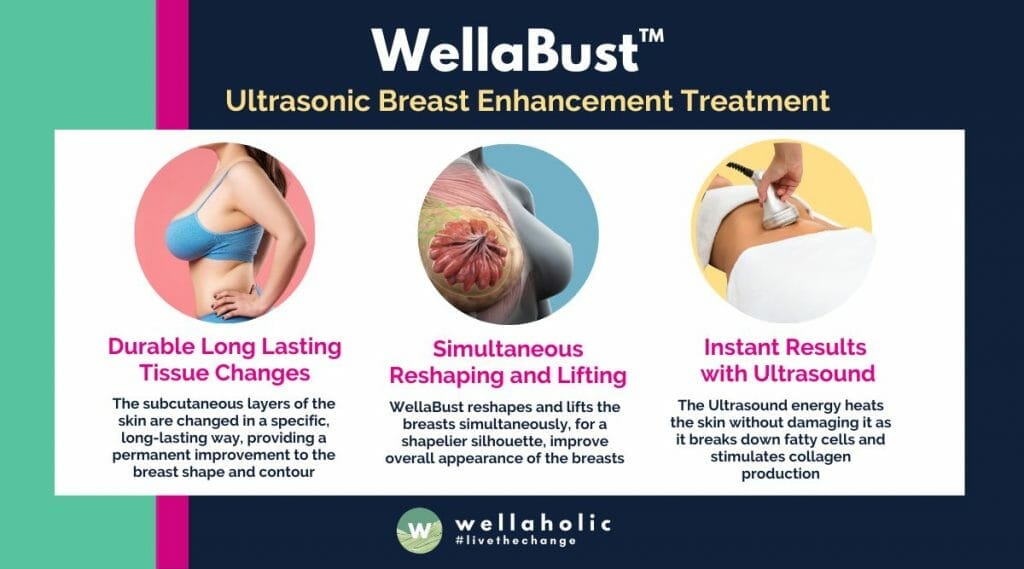
Can You Breastfeed After Breast Implants? What Every Mom Should Know

Can You Breastfeed After Breast Implants? 👶🍼
Good news! Most women with breast implants can successfully breastfeed. The ability to breastfeed depends on several factors including surgical technique and implant placement.
Success Rates 📊
- ● 70-80% of women with implants successfully breastfeed
- ● Submuscular implants have higher breastfeeding success rates than subglandular
- ● About 20% of mothers with implants report insufficient milk production
Factors That Matter 🔍
- ● Incision location: Periareolar incisions (around nipple) may affect milk ducts and nerves
- ● Implant placement: Behind the muscle (submuscular) is better for breastfeeding
- ● Time since surgery: Fully healed implants pose fewer complications
Tips for Success 💪
- ● Regularly empty breasts through feeding or pumping to prevent engorgement
- ● Consult with a lactation specialist during pregnancy
- ● Monitor baby’s weight gain to ensure adequate milk intake
Common Concerns 🤔
- ● Will breastfeeding damage my implants? No evidence supports this concern
- ● Is breast milk safe with implants? Studies show no safety concerns with intact implants
Have questions about breast implants and breastfeeding? Our specialists can help!

Introduction: Breast Enhancement and Breastfeeding: Is It Possible?
We often hear this question from our customers at Wellaholic: “Can I breastfeed after getting breast implants?”
It’s a valid concern for many women considering breast enhancement. As aesthetic professionals with years of experience, we’ve seen how this topic affects our customers’ decisions. At Wellaholic, we believe in providing clear, accurate information to help you make informed choices about your body.
In this article, we’ll explore the relationship between breast implants and breastfeeding, drawing from our experience and the latest research. We’ll cover what you need to know if you’re thinking about breast enhancement but also want to breastfeed in the future.

Understanding Breast Implants
At Wellaholic, we often get questions about breast implants from our customers. We’ve seen how this topic can be confusing, so let’s break it down. Breast implants are medical devices placed under breast tissue or chest muscles to increase size or change shape. There are two main types: saline-filled and silicone gel-filled. Both have a silicone outer shell, but the filling is different.
We’ve noticed that many of our customers are curious about the pros and cons of each type. Saline implants feel less natural but are safer if they rupture. Silicone implants feel more like real breast tissue but can be trickier to detect if they leak. The choice often comes down to personal preference and what feels right for each person. At Wellaholic, we believe in giving our customers all the facts so they can make the best decision for themselves.

Types of Breast Implants
At Wellaholic, we often get questions about breast implants from our customers. We’ve seen many different types over the years, but the two main ones used in Singapore are silicone and saline implants.
Silicone implants are the most popular choice. They feel more like natural breast tissue and come in round or teardrop shapes. Saline implants, on the other hand, are filled with sterile salt water. They’re less common but can be a good option for some people. We’ve noticed that most of our customers prefer silicone implants for their natural look and feel. However, the best choice depends on each person’s body and goals.

Breastfeeding with Breast Implants
At Wellaholic, we often get questions from customers about breastfeeding after breast implants. We’re happy to share that in most cases, women with implants can still breastfeed. The key is the type of surgery and where the implants are placed.
From our experience, implants under the chest muscle tend to affect milk production less. Incisions around the nipple can sometimes impact breastfeeding more. We always suggest talking to your doctor before getting implants if you plan to have children. They can help choose the best option for you. Remember, every woman’s body is different. Some of our customers have had no issues breastfeeding with implants, while others needed extra support. The most important thing is to work closely with your doctor and a lactation expert after giving birth.

Considerations for Breastfeeding after Breast Enhancement Surgery
We at Wellaholic often get questions about breastfeeding after breast enhancement surgery. It’s a common concern for many of our customers. The good news is that most women can breastfeed after getting implants. The surgery usually doesn’t affect milk production. Implants are placed behind the breast tissue or under the chest muscle. This means they don’t interfere with milk ducts.
But there are some things to keep in mind. The type of incision used during surgery can make a difference. Incisions around the nipple may affect nerves important for breastfeeding. Also, very large implants might make it harder for a baby to latch on. We always suggest talking to your doctor about your plans to breastfeed before getting implants. They can help you choose the best options for your goals. Remember, every woman’s experience is unique. Some may need extra support to breastfeed successfully after surgery.

Breast Reduction and Breastfeeding
We often get questions from our customers at Wellaholic about how breast reduction surgery might affect breastfeeding. It’s a valid concern, and we’re here to shed some light on the topic.
Breast reduction can impact milk production, but it doesn’t always mean you can’t breastfeed. The surgery may affect milk ducts and nerves, which can reduce milk supply. However, many women still breastfeed after reduction surgery. It depends on the type of surgery and how much tissue was removed. If you’re planning to have children, talk to your surgeon about techniques that preserve milk ducts. At Wellaholic, we believe in giving you all the facts so you can make the best choice for your body and future plans.

Conclusion
Breast reduction surgery and breast augmentation surgeries, such as breast implants, can both impact breastfeeding in different ways. While breast reduction may reduce milk production, many women still have the opportunity to breastfeed successfully with proper support and guidance.
On the other hand, research has shown that silicone breast implants are safe for breastfeeding, and mothers with implants can provide their babies with the benefits of breast milk without any concerns about the implants affecting its quality or safety.
Embrace Breastfeeding: Experts empower post-surgery moms
Whether you’ve had a breast reduction or breast augmentation, seeking guidance from healthcare professionals, such as lactation consultants, is essential for a positive breastfeeding experience. With the right support and information, mothers can navigate any challenges and enjoy the fulfilling experience of breastfeeding their babies.
Frequently Asked Questions (FAQ)
1. Can Breast Implants Affect My Ability to Breastfeed?
Breast implants can impact breastfeeding, but the extent varies depending on factors like implant placement and surgical technique. At Wellaholic, we’ve observed that many mothers with breast implants successfully breastfeed, especially when incisions are made under the breast fold or through the armpit, as these methods minimize disruption to milk ducts. However, periareolar incisions (around the nipple) may slightly increase the risk of affecting milk production. Understanding your body and consulting with experts is crucial. Singaporean mothers value this clarity as it helps them make informed decisions about their health and parenting journey.
🔵 Implant placement (under or over the muscle) affects milk duct integrity.
🔵 Surgical incision location influences breastfeeding success rates.
🔵 Mothers often produce sufficient milk even after breast augmentation.
🔵 Professional consultations help assess individual breastfeeding potential.
🔵 Early planning ensures smoother transitions into motherhood.
2. What Are the Best Types of Incisions for Breastfeeding After Implants?
The type of incision used during breast implant surgery plays a significant role in preserving breastfeeding capabilities. Wellaholic’s team emphasizes that inframammary (under the breast fold) and transaxillary (through the armpit) incisions are less likely to interfere with milk ducts compared to periareolar cuts. These techniques align with global best practices and ensure minimal disruption to the breast tissue. Many Singaporean women prefer these options because they offer both aesthetic results and functional benefits. With proper guidance, mothers can feel confident about maintaining their natural ability to nourish their babies.
🔵 Inframammary incisions avoid cutting into milk-producing areas.
🔵 Transaxillary approaches reduce risks to the nipple and areola.
🔵 Periareolar incisions carry higher risks for breastfeeding challenges.
🔵 Surgeons tailor incision choices based on anatomy and goals.
🔵 Expert advice ensures safety without compromising aesthetics.
3. How Soon Can I Breastfeed After Getting Breast Implants?
Timing is key when considering pregnancy and breastfeeding after breast implant surgery. Wellaholic advises waiting at least six months post-surgery before conceiving to allow tissues to heal fully. This recovery period reduces complications and ensures optimal outcomes for both mother and baby. Research shows that well-healed implants rarely hinder lactation, giving peace of mind to expectant mothers. Our clients appreciate how personalized care plans address their unique needs, ensuring they’re prepared for every stage of motherhood.
🔵 Waiting 6+ months post-surgery minimizes healing risks.
🔵 Proper recovery supports long-term implant durability.
🔵 Healthy tissues improve chances of successful breastfeeding.
🔵 Personalized timelines cater to individual health profiles.
🔵 Comprehensive consultations build trust and confidence.
4. Will Breast Implants Change the Taste or Quality of My Milk?
A common concern among new mothers is whether breast implants alter the taste or nutritional quality of breast milk. Rest assured, studies indicate no direct link between silicone or saline implants and changes in milk composition. Wellaholic’s experts explain that modern implant materials are biocompatible and designed to integrate seamlessly with the body. Singaporean moms find comfort in knowing their milk remains safe and nutritious for their little ones. By addressing myths upfront, we empower women to focus on bonding with their babies instead of worrying about unfounded concerns.
🔵 Modern implants do not leach harmful substances into milk.
🔵 Nutritional content of breast milk stays unaffected by implants.
🔵 Biocompatible materials ensure compatibility with bodily functions.
🔵 Scientific evidence debunks myths about altered milk quality.
🔵 Clear communication builds maternal confidence and reassurance.
5. Are There Any Risks I Should Be Aware Of When Breastfeeding With Implants?
While most women with breast implants breastfeed safely, there are some considerations to keep in mind. For instance, scar tissue formation or nerve damage from surgery could potentially impact milk flow or sensation. Wellaholic provides detailed pre- and post-operative counseling to educate clients about these possibilities. Singaporean mothers benefit greatly from this proactive approach, which equips them to monitor their bodies and seek timely support if needed. With expert guidance, potential risks become manageable hurdles rather than daunting obstacles.
🔵 Scar tissue might affect milk duct functionality in rare cases.
🔵 Nerve damage could temporarily alter nipple sensitivity.
🔵 Early detection allows prompt intervention for any issues.
🔵 Regular check-ups ensure ongoing breast health monitoring.
🔵 Expert advice prepares moms for realistic expectations.
6. How Can Wellaholic Support Me Throughout My Breastfeeding Journey?
Wellaholic stands out as a trusted partner for women navigating life with breast implants, including breastfeeding. From initial consultations to postpartum support, our experienced professionals provide tailored advice to address each client’s unique circumstances. We combine advanced knowledge of cosmetic procedures with an understanding of maternal health, creating a holistic support system. Many Singaporean mothers rely on us for accurate information, practical tips, and emotional encouragement throughout their journeys. With Wellaholic by your side, you’ll feel empowered to embrace motherhood confidently.
🔵 Tailored consultations address specific concerns and goals.
🔵 Holistic care integrates cosmetic expertise with maternal health insights.
🔵 Practical tips enhance breastfeeding experiences for moms.
🔵 Emotional support fosters confidence and resilience.
🔵 Long-term partnerships ensure sustained well-being and satisfaction.

Serene Chiam, Aesthetic Director (LinkedIn)
Serene Chiam, the Aesthetic Director at Wellaholic, is a highly skilled and experienced professional in the field of aesthetic treatments. With over a decade of expertise, including her previous role as a Clinical Aesthetics Manager with Laser Clinics Australia, Serene is well-versed in the latest techniques and technologies in the industry. Her CIDESCO certificate in skin care and Bachelor of Health Science (Aesthetics) from Torrens University of Australia further demonstrate her commitment to providing the highest standard of care to her clients. Serene’s extensive knowledge of skin rejuvenation, laser treatments, and body sculpting enables her to develop personalized treatment plans that deliver optimal results. Her warm and approachable demeanor puts clients at ease, ensuring a positive and comfortable experience at Wellaholic.
Contact Serene at [email protected]
GET IN TOUCH
Book Now Pay Later

Bigger and Firmer Breasts: Make it a Reality with Bust RF Microneedling & WellaBust™
- ⭐ Revolutionary Bust Enhancement: Experience bigger, firmer breasts with our innovative Bust RF Microneedling & WellaBust™ treatments.
- ⭐ Bust RF Microneedling – A New Era: Tighten and firm sagging skin with our minimally invasive Bust RF Microneedling, a treatment that stimulates collagen production for firmer breasts.
- ⭐ WellaBust™ – Non-Surgical Augmentation: Achieve immediate results with WellaBust™ our non-surgical ultrasonic cavitation treatment for enhanced breast firmness and contouring.
- ⭐ Award-Winning. Wellaholic’s treatments have been recognized by top beauty publications such as Daily Vanity, Beauty Insider, and Tropika Club Magazine.
- ⭐ Over 2000 Verified Customer Reviews. Wellaholic has over 30 industry awards and over 2000 positive reviews from customers, and >50% are repeat customers.

Bust RF Microneedling – The Breakthrough Breast Firming Treatment
Bust RF Microneedling has all the skin resurfacing benefits of traditional microneedling, but with the added technology of insulated needles that deliver RF energy to the skin for a wealth of benefits:
- ⭐ Natural Lifting and Firming: Bust RF Microneedling offers a natural, non-surgical solution for lifting and firming sagging breasts.
- ⭐ Stretch Mark and Pigmentation Reduction: The treatment effectively diminishes stretch marks and pigmentation on the bust area.
- ⭐ Long-Term Collagen Production: By stimulating the production of new collagen, it ensures long-term skin tightening and firming effects.
- ⭐ Verified by Doctors & Dermatology Publications: According to a 2023 study published in the journal Dermatologic Surgery, Bust RF Microneedling is an effective treatment for saggy breast tissue. The dermatologists found that RF microneedling on the breasts improved breast lift by an average of 25%, skin quality by an average of 30%, and overall patient satisfaction by an average of 85%.

WellaBust™ Ultrasonic Breast Enhancement Treatment
WellaBust™ Ultrasonic Breast Enhancement is a revolutionary non-surgical treatment that uses ultrasound technology to enhance breast firmness and contour, offering immediate results for a more confident you.
- ⭐ Non-Invasive Revolution: WellaBust™ offers non-surgical breast enlargement using ultrasonic cavitation, revolutionizing the aesthetics industry.
- ⭐ Firmness & Contouring: Achieve improved firmness and better contouring of the breasts with the advanced ultrasound technology in WellaBust™.
- ⭐ Targets Saggy Breasts & Loose Skin Perfectly: Based on study by Arden Clinic, ultrasound cavitation treatments can effectively treat saggy breasts, loose skin on breasts as well as to reduce cellulite.
- ⭐ Fat Redeposition: WellaBust™ ensures the broken down fat is naturally expelled by the body via the lymphatic system, effectively reducing lumpy and dimpled skin.






